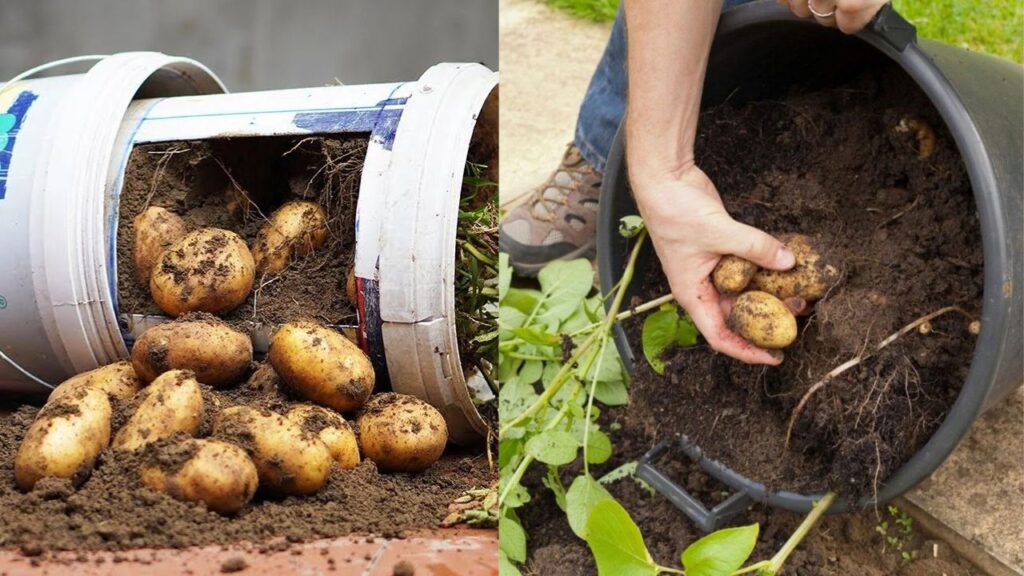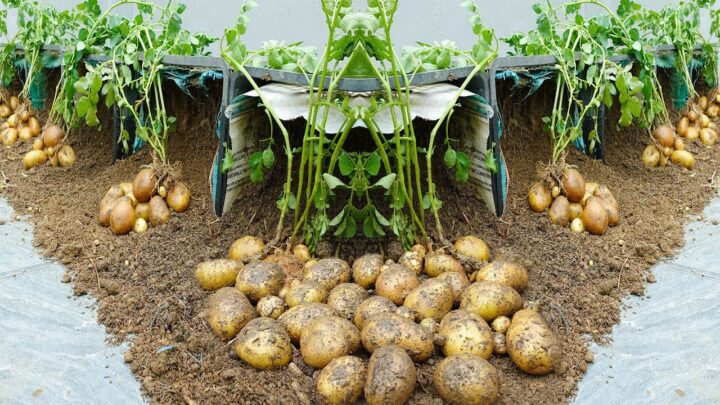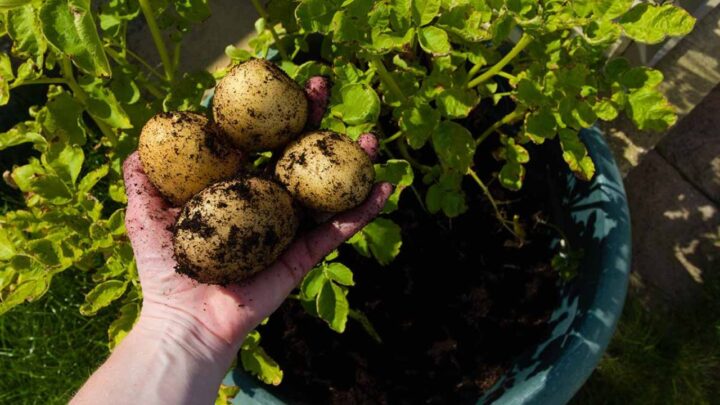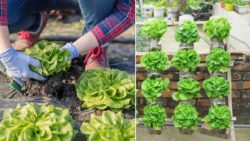Grow Unlimited Potatoes in Buckets – Discover how a simple plastic container trick can help you enjoy fresh, homegrown potatoes all year round. This easy method works perfectly even for beginners with limited space or garden experience.

Why Grow Potatoes in Plastic Buckets?
Growing potatoes in plastic containers is a smart, space-saving solution for anyone who loves home gardening. With the right setup, you can control soil quality, moisture, and sunlight easily. The bucket method prevents pest problems and eliminates the need for digging in hard ground. Plus, harvesting becomes much simpler—just lift and pour out the soil! This approach works perfectly for urban gardeners, balcony growers, or anyone looking to enjoy fresh potatoes year-round.
What You’ll Need to Start
To grow potatoes successfully, preparation is key. Make sure you have the right materials ready before you begin:
- Clean plastic buckets (at least 20 liters each)
- High-quality potting mix with compost
- Seed potatoes (certified disease-free)
- Drill or nail for drainage holes
- Mulch or straw for covering soil
These basic items help create the perfect growing environment for your potato plants. Buckets provide excellent drainage and temperature control, while compost enriches the soil for strong growth.
Step-by-Step Guide to Grow Unlimited Potatoes
- Step 1: Prepare Your Buckets
Start by drilling 6–8 holes at the bottom and sides of each bucket for proper water drainage. This prevents root rot and keeps the soil healthy. If you’re reusing old containers, clean them thoroughly with soap and water to remove any chemical residues.
- Step 2: Add the Right Soil Mix
Fill each bucket one-third full with a rich, loose potting mix. Mix compost and perlite or sand to improve aeration. Potatoes grow best in slightly acidic soil, so aim for a pH between 5.0 and 6.0 for maximum yield.

- Step 3: Plant Your Seed Potatoes
Place two or three seed potatoes in each bucket, spaced evenly apart. Make sure the eyes (sprouting points) face upward. Cover them with 4–5 inches of soil, leaving room at the top to add more soil later as the plants grow.
- Step 4: Water and Provide Sunlight
Keep the soil consistently moist but not soggy. Potatoes love full sunlight, so place your buckets in a spot that receives at least six hours of light daily. Rotate the containers occasionally for even growth.
- Step 5: Hill Up as Plants Grow
As your potato shoots reach 6–8 inches tall, add more soil or mulch to cover two-thirds of the stems. This encourages more tuber formation along the buried sections. Repeat this step every two weeks until the bucket is full.
- Step 6: Harvest Your Potatoes
After about 10–12 weeks, when the plants begin to yellow and die back, it’s time to harvest. Tip the bucket over and gently sift through the soil to collect your fresh, homegrown potatoes.

Ideal Growth Conditions for Bucket Potatoes
Potatoes prefer cool to moderate climates. Maintain soil temperature between 15°C and 20°C for optimal growth. Use well-draining soil to avoid waterlogging, and ensure your buckets are placed where air circulation is good. For a continuous harvest, plant new buckets every 3–4 weeks throughout the growing season.
| Condition | Ideal Range | Importance |
|---|---|---|
| Soil pH | 5.0 – 6.0 | Encourages tuber formation |
| Temperature | 15°C – 20°C | Prevents overheating |
| Sunlight | 6–8 hours daily | Boosts yield |
| Watering | Moderate & consistent | Prevents rot |
| Harvest Time | 10–12 weeks | Peak flavor & size |
Extra Tips for Bigger Yields
- Always choose disease-free seed potatoes for better results.
- Use a dark-colored bucket to retain soil warmth during cooler months.
- Rotate bucket placement occasionally to ensure even light exposure.
- Add compost tea or organic fertilizer every three weeks.
- Harvest gently to avoid bruising the delicate potato skins.
FAQs
Can I reuse the same soil next season?
It’s best to replace the soil each season to avoid disease buildup. Old soil may carry pests or depleted nutrients.
How many potatoes grow in one bucket?
Each 20-liter bucket can produce 8–12 medium-sized potatoes, depending on care and growing conditions.
Do I need to fertilize bucket potatoes?
Yes. Adding compost or a balanced organic fertilizer every few weeks keeps the plants nourished and improves yields.
Can I grow potatoes indoors?
Absolutely! Just ensure your containers get enough sunlight or use grow lights to mimic outdoor conditions.
Growing your own potatoes in buckets is one of the most rewarding home gardening projects. With patience and the right technique, you can enjoy a year-round harvest of fresh, organic potatoes straight from your balcony or backyard. Start small, follow these simple steps, and watch your buckets turn into a never-ending source of healthy, homegrown food!




